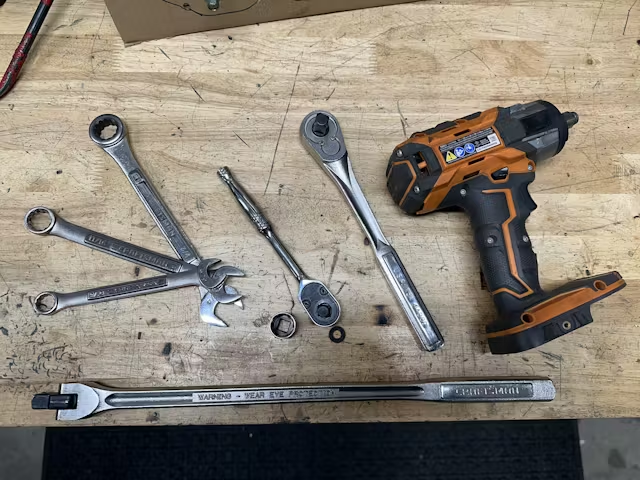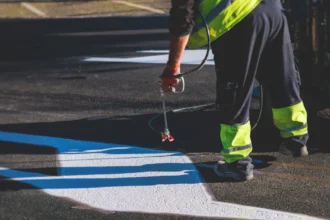Industrial tools are the backbone of every job that involves fixing, building, or making something. From big factories to your neighborhood garage, these tools help workers get the job done. They’re used in all kinds of places like auto shops, construction sites, farms, and warehouses.
But not all tools are the same. Some break too fast. Others aren’t safe. Picking the right tools can save time, prevent injuries, and make hard jobs easier. This article looks at the real problems workers face and how using the right tools can solve them.
Common Problems Faced in Heavy-Duty Work Environments
Dealing with Equipment Breakdowns
One big problem in busy workplaces is tool failure. When a tool breaks, it can slow everything down. In places like manufacturing plants or HVAC repair sites, even a short delay can cost money.
Breakdowns happen when tools are used too much or aren’t built strong. Workers then have to stop and fix or replace them, wasting time and energy.
Struggles with Tool Durability and Performance
Many people use tools every day, often for hours. If a wrench slips or a power drill burns out, it becomes a problem. Construction workers, electricians, and plumbers need tools that last.
Cheap tools wear out fast, especially when used on tough jobs like metal fabrication or pipefitting. When tools don’t perform well, the whole job suffers.
The Cost of Downtime Due to Poor Tool Quality
Bad tools can cause delays. That means missed deadlines or angry customers. For example, in auto repair, if a mechanic has to wait for a new socket set, they can’t finish the work.
Every minute counts. That’s why reliable tools are so important for businesses and workers alike.
How the Right Industrial Tools Solve Real-World Challenges
Enhancing Productivity on the Jobsite
Good tools get more done in less time. A strong impact wrench or a sharp saw blade can speed up work and reduce effort.
In places like assembly lines or construction zones, better tools help workers move faster without making mistakes. This means more jobs finished, fewer problems, and happier customers.
Reducing Worker Fatigue with Ergonomic Tools
Using the wrong tool can make workers tired fast. Heavy or awkward tools can cause hand pain, back aches, and even injuries.
Tools that are designed to fit the hand well, with soft grips and lighter weight, can make a big difference. This helps in long jobs, like when electricians run wires or carpenters cut wood all day.
Ensuring Accuracy in Precision-Based Tasks
Jobs that need perfect cuts or tight bolts rely on accuracy. In metalworking or electronics repair, a small mistake can ruin a big job.
High-quality tools keep things tight, level, and clean. That’s why tools with strong materials and steady performance matter in detailed work.
Choosing the Right Tools for the Job
Matching Tool Specs to Project Needs
Every job is different. A simple screwdriver won’t help when you need a torque wrench. It’s important to know what each tool is made for.
Workers in agriculture, construction, or electrical work should pick tools that match their tasks. The right tool saves time and avoids mistakes.
When to Invest in Specialty vs. Multi-Use Tools
Some tools are made for just one thing. Others can do many jobs. For example, a multi-bit screwdriver can handle lots of screws, but sometimes a job needs a special torx driver.
Knowing when to use what helps teams work smarter. It’s often worth it to buy both types—one for daily use and one for tricky jobs.
Tips for Long-Term Tool Maintenance
Even good tools need care. Dirty or rusty tools break faster. Keeping tools clean, dry, and stored in proper toolboxes can make them last longer.
In busy places like garages or factories, regular maintenance is key. Sharpening blades, tightening bolts, and checking for wear helps keep things running smooth.
Safety First – Tools That Protect the Worker
Avoiding Injuries with Reliable Tools
Broken tools can be dangerous. A cracked hammer handle or a frayed cord can hurt someone. Using tools that are tested and built well can prevent cuts, burns, or even worse injuries.
In jobs like plumbing or mechanical work, staying safe means using tools that won’t fail.
The Role of Design in Jobsite Safety
Some tools are built with safety in mind. For example, anti-slip grips, auto shut-offs, and shock-resistant housings help reduce risks.
Design features like these are found in tools used in warehouses, HVAC jobs, and electrical systems. They help workers stay focused and safe.
Maintenance Practices That Prevent Accidents
Neglecting Michigan industrial tools can lead to injuries. A rusty saw blade or loose socket wrench can slip or snap. That’s why workers are trained to check their tools often.
Simple habits like wiping down tools or checking cords for damage make a big difference in safety.
Tools That Adapt to Industry Trends
Supporting Automation with Smarter Tools
Many industries are moving toward automation. Tools now come with digital features like torque sensors, battery indicators, and auto-calibration.
This helps in jobs like robotic assembly, aerospace, or precision machining, where human error must be avoided.
Eco-Friendly Innovations in Industrial Tools
Going green matters. Many companies now use cordless tools with long-life batteries or tools made with recycled materials.
In places like home renovation, plumbing, and light construction, these tools reduce waste and save energy.
Meeting Compliance Standards with Modern Equipment
Tools must meet safety and performance standards, especially in places like industrial plants, government jobs, or school maintenance crews.
Modern tools come with certifications and labels that show they’re approved for professional use.
Conclusion: The Tool Behind Every Great Job
Industrial tools may seem simple, but they play a big role in every hands-on job. From fixing cars to building homes, they help workers stay safe, save time, and do great work.
The right tools fix problems like slowdowns, mistakes, or injuries. And when tools are built to last, everyone—from a garage mechanic to a factory tech—can trust them to get the job done right.
Choosing quality tools, keeping them in good shape, and knowing how to use them wisely makes all the difference. No matter the job, strong tools lead to strong results.
















